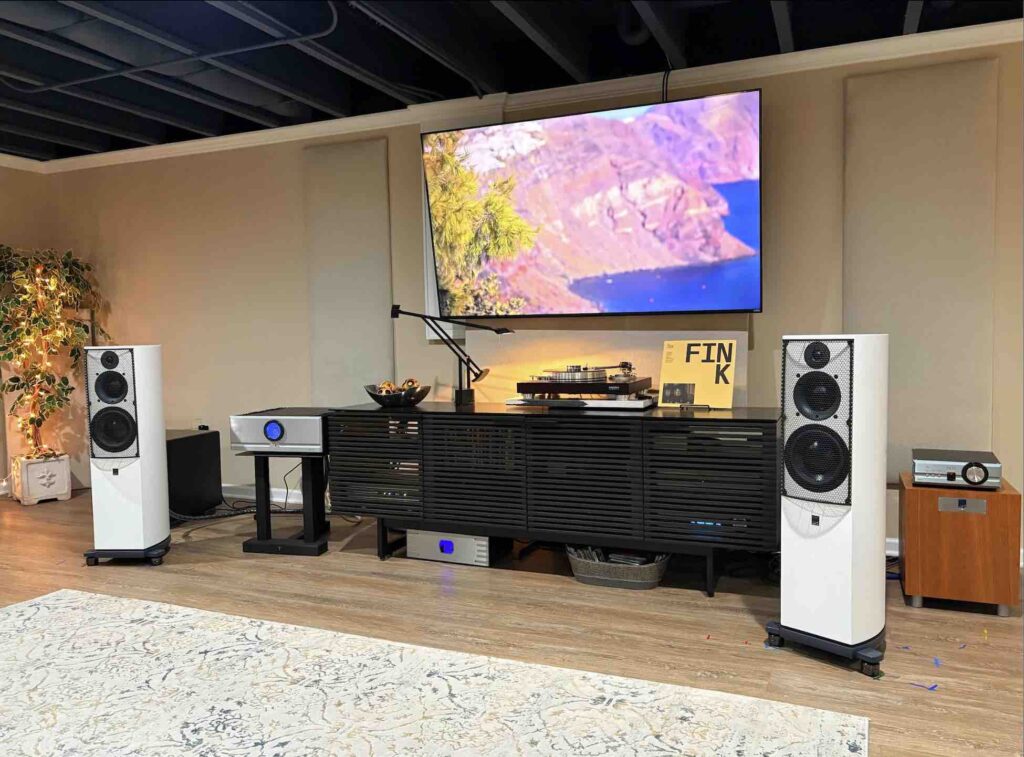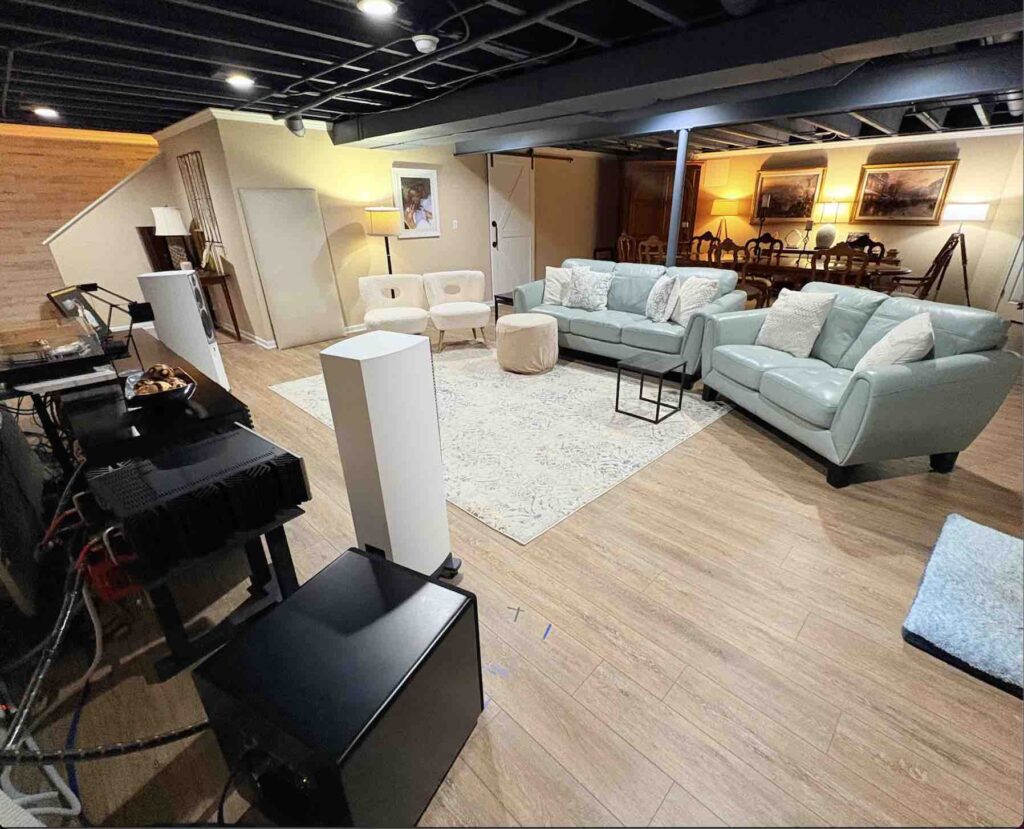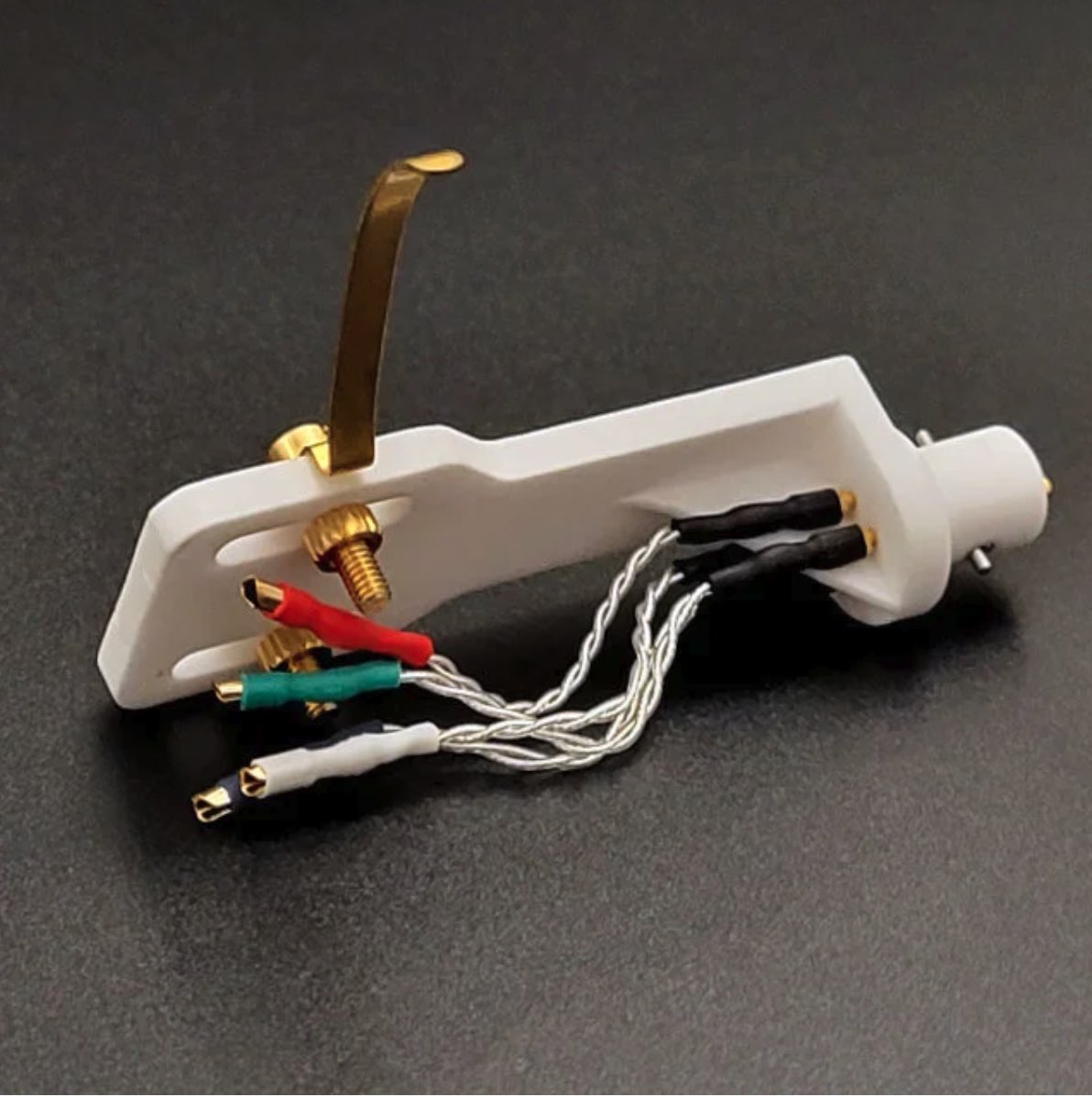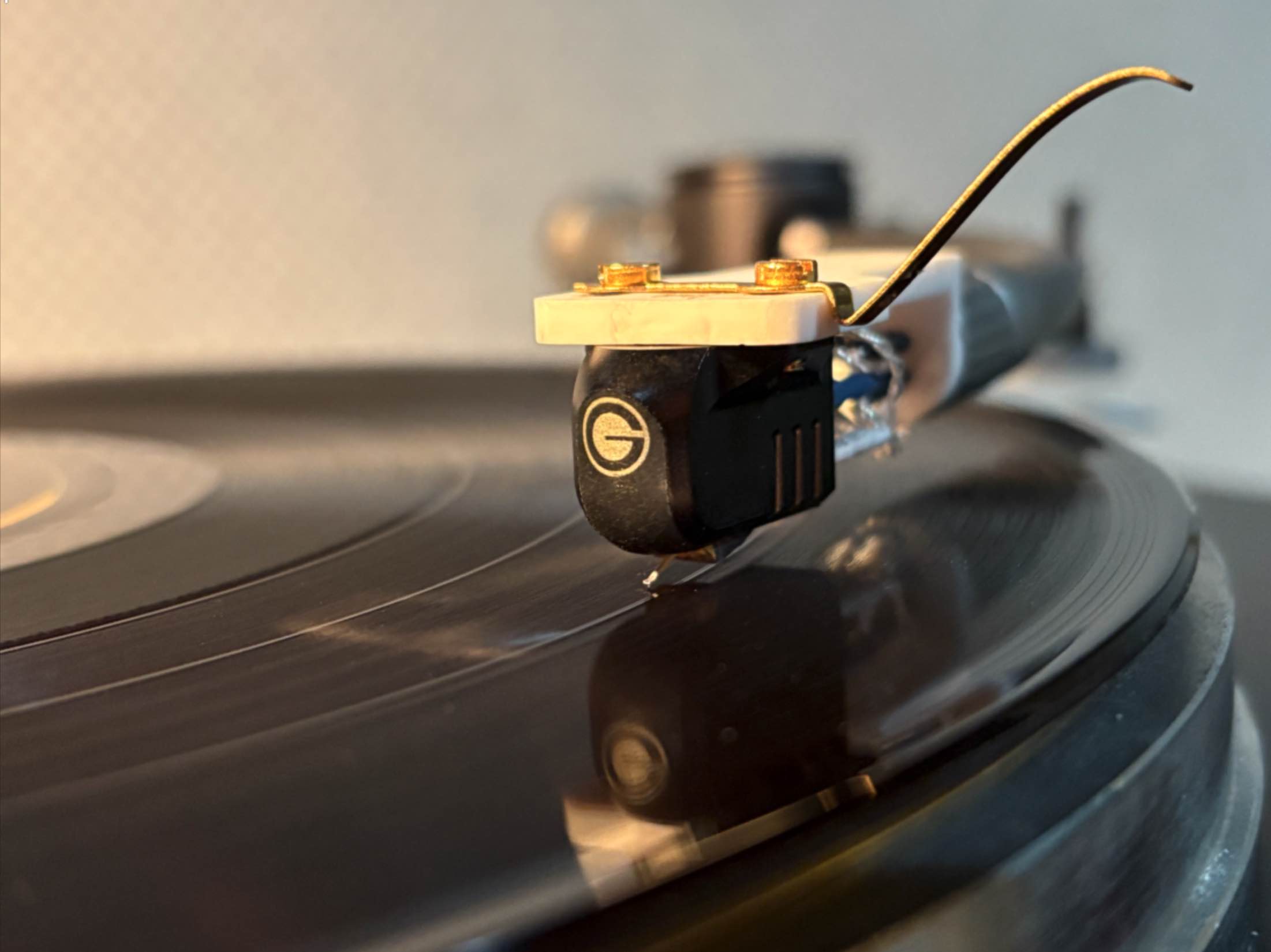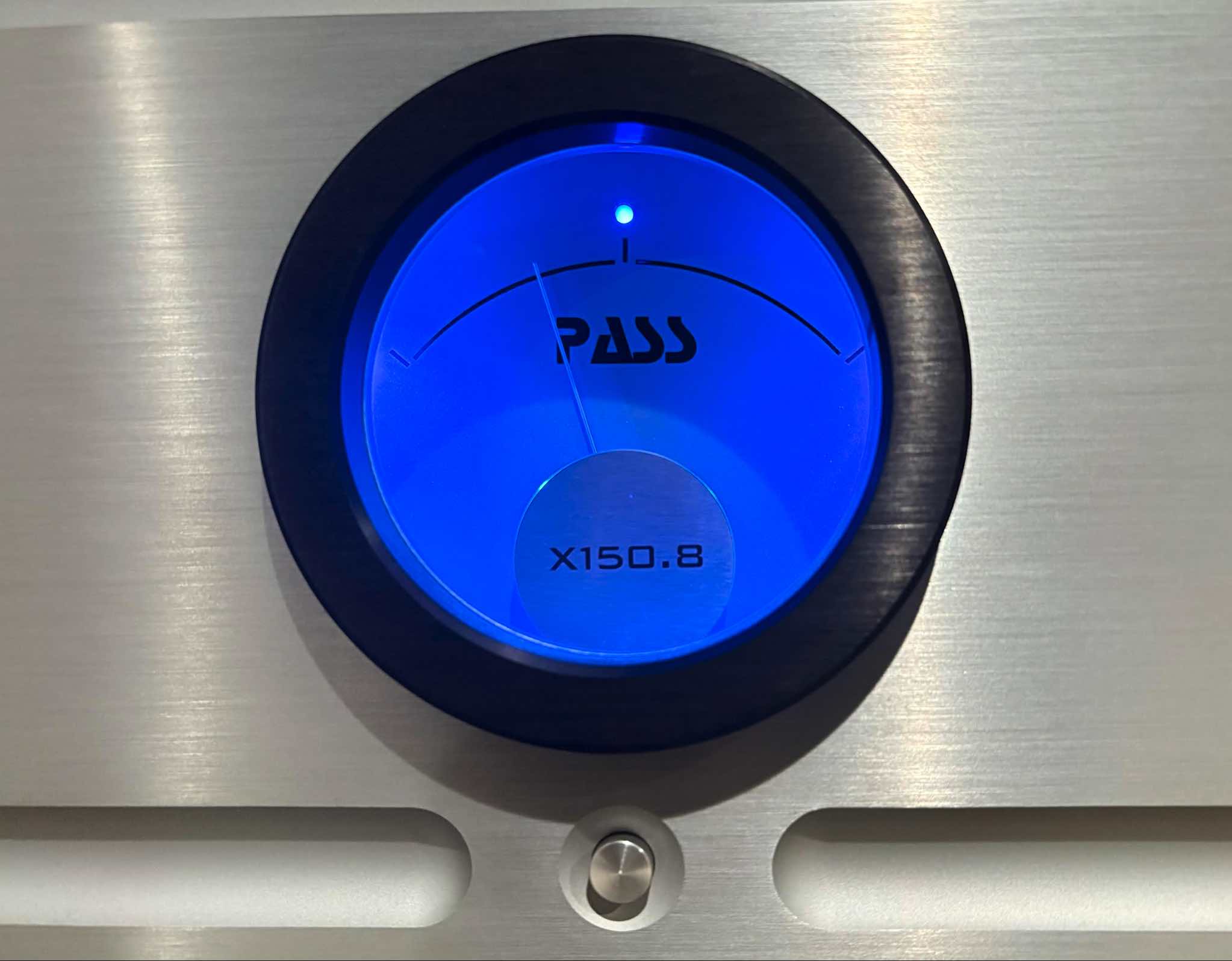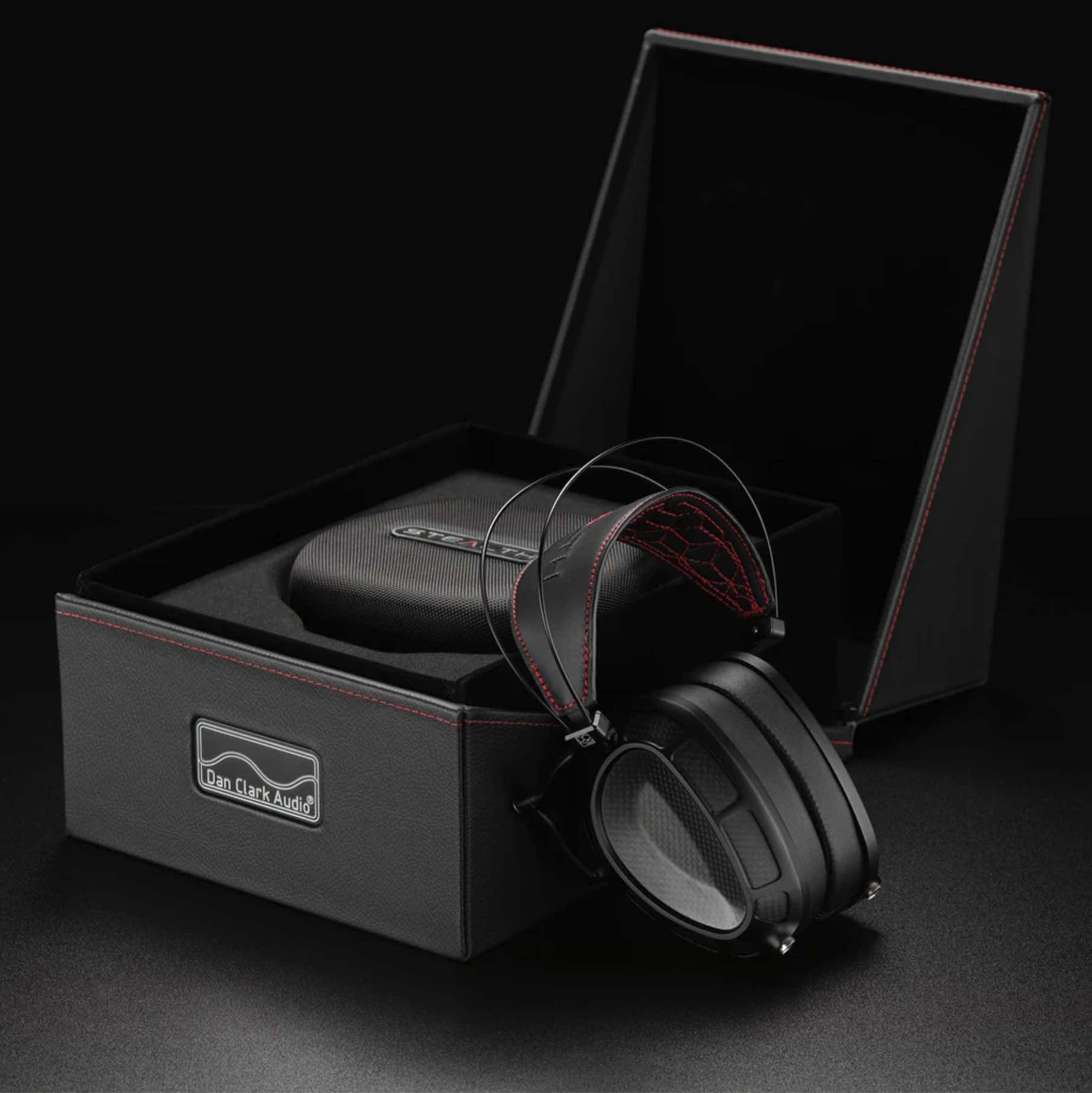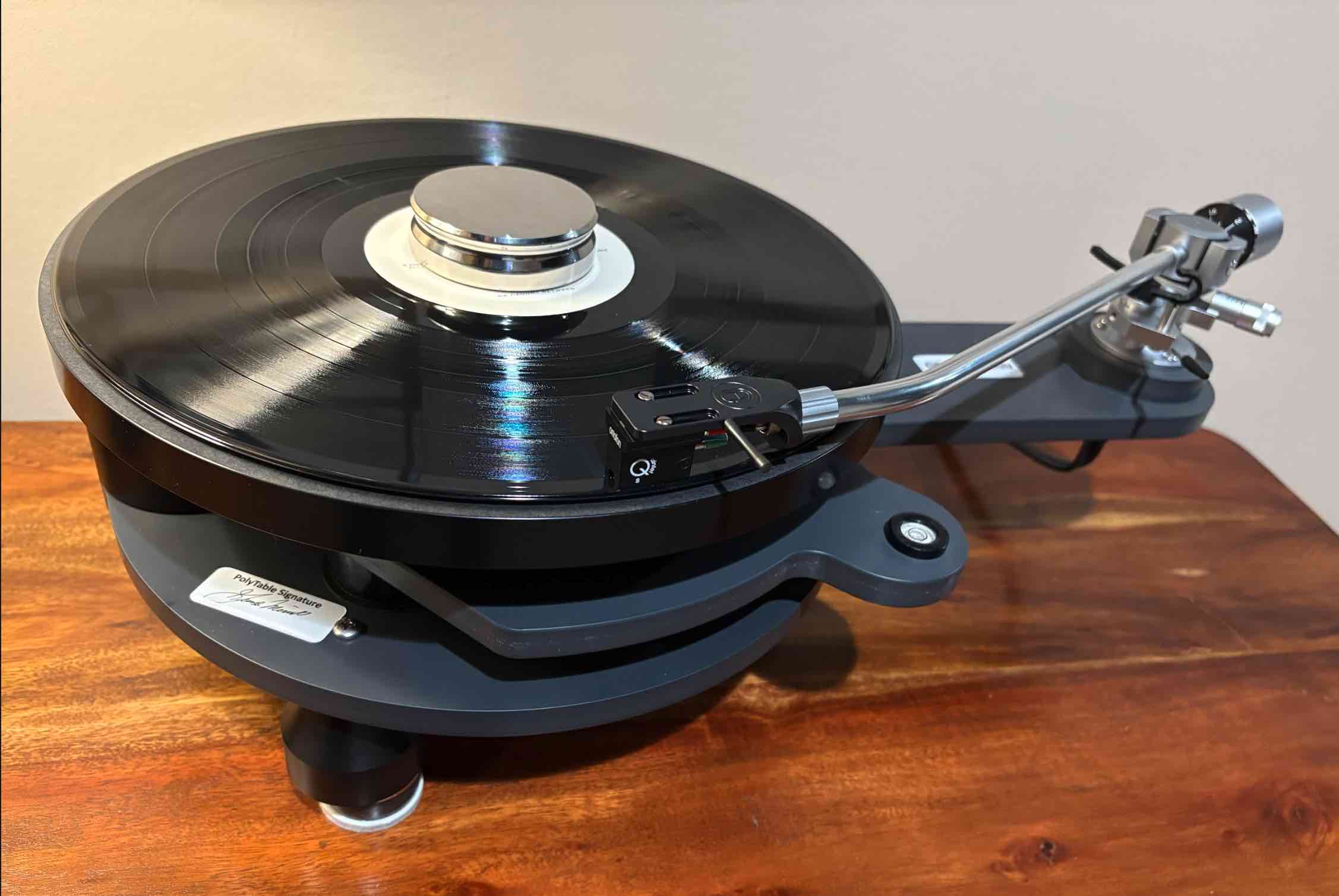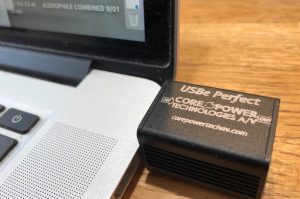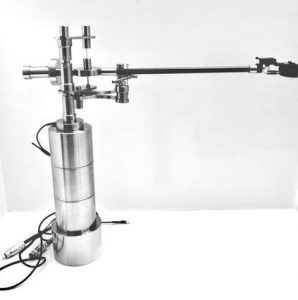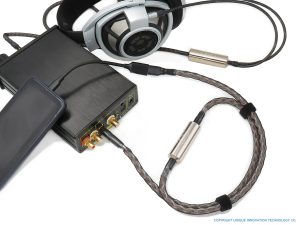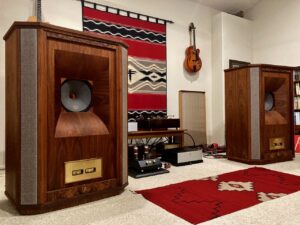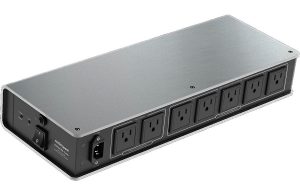I am convinced that, as a species, we are hardwired to respond with awe at sheer displays of power, largesse, and the overwrought, and I was reminded of that again when I arrived home to a UPS delivery of 12 Carbide Audio Multi-Axis Vibration Isolator Footers totaling 60-plus pounds enclosed in a 2' x 1' x 1' fiber reinforced box awaited in our foyer. Schlepping it downstairs to our A/V room, it felt like a crate of steel weights or another beefy amp in for review!
"My God!" I exclaimed as I set it down. At 62, slinging heavy hardware isn't as easy as it once was—that much was clear!
Removing a Carbide Audio footer from its bubble wrapped box, discomfort turned to wonder: lined with two black faux velvet holding bolts and a three inch long, quarter inch thick steel wire flathead screwdriver with a triangular handle, I was impressed by the heft and workmanship of this gleaming oversized, machined, black and silver carbide steel disk.
Image courtesy of The Hollywood Fix. 'Arnold Schwarzenegger shows off his military Hummer H1 Humvee while leaving lunch in Beverly Hills' YouTube video.
The Carbide Audio footers oozes the testosterone of a bulky brass diving watch or a military Humvee like the one Arnold Schwarzenegger drove down the streets of Santa Monica, California while smoking a cigar. I placed them under my speakers and my subwoofer, and inspired, posted the following observations on my blog:
Image from Metano Mandus YouTube Video, Bayverse Bumblebee Transformations
"Transformers are massive, hypertrophied Sci-Fi action fighting robots that can morph into cars, and if they were real and played hockey, I could see them using Carbide Base Audio Isolation Feet for pucks. The Carbides are that big—and speaking as someone who, though embarrassed, admits to watching several of their movies—they are that space age cool. Marveling at their quality look, feel and finish fresh out of the box, I felt like a 12 year-old wanting to play with the latest Transformer toy. Only, instead of hoisting shiny Hasbro monstrosities and making whooshing noises from my lips, I am tucking Carbide footers under my Usher ML-802 loudspeakers and making marvelous music with their drivers."
A friend who's auditioning the Carbides, but hasn't unpacked them yet, texted me for first impressions and I replied, "They definitely clean things up a bit. Details remain ever present. Voices a touch more natural. The system was sounding amazing but more in-your-face before, but now it's pushed back a bit and a touch less aggressive. I like them! That said, they are pretty big and a touch expensive."
Now the tweeters of my Usher ML-802 speakers are positioned maybe five inches higher than my ears when I'm seated on my listening couch, so until recently, I'd conduct critical listening seated higher on a wooden desk chair that places my ears on the same plane. However, at another friend's suggestion, I recently removed the front spikes and set the Ushers' oblong front steel base directly onto spike protector cups while retaining the rear spikes, tilting my speakers slightly forward to point their tweeters directly at my ears.
Elaborating further, I texted on: "The presentation sounds a bit more open, but part of that may be the relative height of the front of the speakers. I still have them angled forward, but having them raised two inches higher backs off the more sonorous quality that I imparted to them with the rake forward combined with the much closer proximity of the front [to the floor] (talk funny car, F-1 racer or low rider close). That said, I would venture to guess that the multilevel isolation approach does shave off some slight sharpness in the right frequencies to make it a more organic presentation while not rolling off the higher frequencies as some other isolation devices had several months ago."
Photo courtesy of www.onnetflix.co.uk
Later that night as Belle and I watch the Netflix movie, Johnny (a moving true tale of a convicted criminal who performs community service at a hospice and is befriended by its overseer, an eccentric but devout priest), I am impressed by the enhanced sense of realism in the dialog and delightful soundtrack that the Carbides contribute to our A/V room experience. Turns out that would be the hallmark of my experience with these Carbide footers.
According to their website, the Carbide Audio footers employs a "multi-axis" approach in their separate upper and lower sections optimized to isolate vibration and dissipate it in the horizontal and vertical planes. It elaborates, as follows:
"The upper portion utilizes an aluminum housing machined to accept a specially formulated viscoelastic member called ViscoRing™. The ViscoRing™ acts as a damped spring supporting the equipment while isolating it from vertically oriented vibrations. It is replaceable depending on the intended supporting weight range.
"A new austenitic (non-magnetic) stainless steel section resides in the top center of the upper portion to improve coupling with the underside of equipment.
"The lower portion incorporates zirconia ball bearings and viscoelastic elements to enhance horizontal isolation and damping. The large bearings roll on flat raceways formed from polished hardened steel to minimize rolling resistance. The bottom is threaded to facilitate nearly 3/4″ (20 mm) of height adjustment. It can also optionally accept the 3 provided spikes to pierce through carpet."
Image courtesy of Carbide Audio
A Word on Carbide Audio
Established in March 2019, Carbide Audio's headquarters reside in the town of Llano, Texas (in the hill country west of Austin), where they design and manufacture their products in-house on their own CNC machining facility.
"Our team leverages the latest in computer modeling and manufacturing to push the envelope of HiFi audio technology," their site says. "We take pride in being hands-on throughout all stages of product development."
Carbide's In-House Comparison Testing
Carbide Audio ran a comparative test versus a handful of other popular isolation products. At their site, it explained:
Three different vibration sources were utilized to generate vibrations: an electromagnetic vibration table, a subwoofer, and a 2-way loudspeaker. In each experiment, four audio footers were placed on top of the vibration source and then an aluminum plate was placed on top of the audio footers. Weights were bolted to the aluminum plate to simulate the mass of a loudspeaker or audio equipment having a total mass approximately 32 kg (70 lbs). Measurement Specialties ACH-01 piezoelectric accelerometer sensors were then attached to the plate with double sided tape to measure acceleration in the horizontal and vertical directions. The accelerometer sensors in turn fed into amplifiers calibrated for their respective sensors.
Their conclusions were as follows:
"The vibration isolation performance of the audio footers tested varied significantly. In most cases, unwanted stray vibrations increased through the footers in the bass and lower midrange frequencies. In other cases, damping was insufficient causing resonances to continue long after the initial stimulus, as indicated by the long decay times in some of the waterfall graphs.
"The Carbide Base footers were unique in their superior ability to isolate and damp the bass and lower midrange thus maximizing clarity across these frequencies." (You can read more HERE).
Build and Capacity
The Carbide Audio Multi-Axis Vibration Isolation footers, feature a rugged, machined aluminum housing, are designed for placement under turntables, audio electronics, and loudspeakers, and are five inches in diameter and two inches in height. Their height can be individually adjusted up to 3/4" by rotating the upper portion. They are available in black or silver.
"While some isolation devices require different versions for different weights," their site says, "a single version of the Carbide Base footer can support a wide range of equipment weights by simply replacing the installed ViscoRing™. A set of four Carbide footers using green ViscoRings will support up to 35 lbs., whereas a set of four Carbides using their red ones will support up to 800 lbs." (see their chart above).
A Personal Touch
Carbide Audio's founder, Jeff Jenkins, took time from his busy schedule to accommodate my questions and concerns.
First, he agreed that using them under my Usher loudspeakers and Hsu subwoofer made great sense, adding, "For the weights of these, I'll send you 12x footers with the Medium ViscoRing installed. Using 4x of the medium stiffness footers under the sub will give extra support for the additional weight of the Pass Labs amp on top. These weights fall right in the 'sweet spot' for the Medium ViscoRing (the name we give our viscoelastic material) where the resonance frequency is the lowest and therefore isolation is the best."
Second, Jenkins asked if I could measure my listening distance from the speaker, the height of the tweeter and my ear height ("I can assume your ear height when seated is around the standard 37" from the floor," he wrote, "unless you happen to have that too.")
With those measurements I can determine exactly how many turns to unscrew the rear footers. The footers raise the speaker about 2" when compressed under weight. Each turn of the bottom raises the footer 0.05", with a maximum of 0.75" of high adjustment ability.
I responded, "Seated on the couch, my ear canal is roughly 39 1/8" above the floor, the distance from my head to the speaker is approximately 12 1/2 feet, and the height from the center of the tweeter is 45 1/2" above the floor seated on the half inch thick floor spike protector puck; when employed, the spike adds 1 1/2" height."
Third, Jenkins wrote, in return:
This is great, I was able to calculate some options for your consideration. According to these measurements it looks like your current setup actually points the tweeter very slightly below your ear to 35 1/8" above the floor at your listening distance. Below are options for both preserving the current angle and also for pointing directly to your ear.
Current angle: Front outriggers resting directly on top of the footer.
Rear: Unthread rear footers 8 turns to raise height 0.4". Place rear spikes into the top hole of the footer.
Pointed directly to your ear (option 1):
Front: Unthread front footers 1.5 turns to raise height 0.15". Outriggers resting directly on top of the footer.
Rear: Place spikes into the top hole of the footer.
Pointed directly to your ear (option 2):
Front: Outriggers resting directly on top of the footer.
Rear: Screw in 3 supplied floor spikes into bottom of footer to raise height 0.6". Unthread rear footers 11 turns to raise height and additional 0.55". Outriggers resting directly on top of the footer.
Instead of having the outriggers simply rest on top of the footer there are 2 other options. First is to screw in the footers in place of the spikes using the supplied bolts. The top housing will tilt a bit to match the angle of the speaker but this is allowed by design. Second is to use 1 of the supplied spikes threaded into the top hole on the footer so that it is pointed upward. You can then place the threaded hole on the bottom of the outriggers down over the spike. Simply placing the outriggers directly on the footer should be fine though. The top of the footer has a ridge machined into it to provide good coupling to the outriggers.
In the past I've found it helpful to tilt back the speaker and use something like a block of wood to rest the speaker on while threading/unthreading footers into the bottom. That way the person tilting it doesn't need to hold the heavy speaker at a tilted angle.
All that was very helpful. Following his advice, with the Usher loudspeakers, I rested the front outriggers atop the Carbides while setting the rear spikes into the top hole of the rear footers. And removing the rubber feet of my Hsu Research ULS-15 Mk2 subwoofer, I replaced them with the Carbide footers (note: make sure that you fully tighten the bolt into the top of the footer assembly so that tightening and removing them from the sub or speaker won't be problematic; if it's loose, you will not have adequate grip on the bolt when you rotate the footer to tighten or remove it).
Jenkin's Carbide Audio footers firmly underfoot, I used them in my listening-A/V room for the better part of two months, so I figure it's time to put them through the formal paces.
Listening Session
Diana Krall's vocals are sumptuous and tactile, breathy and balanced, alternatively vulnerable and powerful in their humanity, while her piano is tonally rich and palpable in "A Case of You" (Dianna Krall. Diana Krall: Live in Paris. Qobuz FLAC 44.1kHz, 16-Bit. Impulse 2002). The quality and control of this recording is studio sublime, so much so that the applause at the end startles.
From the the lower bass regions to the whiny, taut strains in the upper registers, Paul LaFaro's acoustic bass solos are crystalline in clarity, trading leads Bill Evan's sprite piano against the backdrop of Paul Motion's brushed cymbals and snare in "Detour Ahead (Take 1)" (Bill Evans The Complete Live at The Village Vanguard 1961. AIFF 44.1kHz, 16-Bit, Riverside, June 25, 1961). Freed from the moorings of the speakers' spikes on floor protectors, there's a certain ease and lightness of tone and texture—a beguiling balance that entreats you to kick off your shoes, sink into your seat and drink long and deep of this enchanting aural elixir.
Manu Katche's clacking drumsticks count them in, then his kick drum is enjoined by Tony Levin’s electric bass, David Sancious' keys lock in the tempo, and the audience cheers in recognition and claps to their four/four beat. Then, David Rhodes’ solos on a sparkling acoustic guitar solo for several measures, followed by Peter Gabriel’s raspy intonation of "Cover me when I run/ Cover me through the fire..."—and the whole experience, replete with reverberations and a sense of the concert hall's space—are rendered, unaffected, with captivating realism in this live rendering of "Shock the Monkey" (Peter Gabriel. Back to Front. FLAC 44.1kHz 16-Bit file. Real World Records, June 23, 2014). It feels and sounds just right.
Yusif Eyvazov's rich tenor bears striking resemblance to Josh Groban's, delivered with passion and power in Ricomincero (Anna Netrebko & Yusif Eyvazov. Romanza (Deluxe Edition). Qobuz FLAC 44.1kHz 16-Bit. Panorama, September 29, 2017). Against the backdrop of strings, woodwinds and the harp of the London Session Orchestra, this striking ballad is a richly textured and immersive delight as afforded by the Carbide Audio Base Footers.
Photo courtesy of Carbide Audio
Conclusion
Recently, I watched a robust middle aged man in shorts snaking his military surplus Humvee along a winding lakeside road during the lunch hour. Like some of us, I think he wanted to be like Arnold, but wasn't quite pulling it off. Watching wistfully, I realized, driving behind him, that there's no way that our small, two car garage would accommodate both it and Belle's Toyota RAV4 (I sense a metaphor here); at seven feet, one inch wide—or the width of a small church pew—door clearance would be miniscule (I drive a Toyota Corolla that barely fits with the RAV4, but dream of a Humvee in my golden years). And think of all the gas it would guzzle! Sigh. But, for someone with a larger garage and bigger budget, that wouldn't be an obstacle.
The Carbide Base Footers deliver as advertised, adroitly ameliorating vibration, clarifying and refining the aural imaging of high fidelity speakers—especially in the bass region. They're impressive looking and their quality of construction is rugged, polished and first rate. As I mentioned earlier, I was very impressed when I opened up the package and saw what glistened inside.
Like the aforementioned professional brass divers watch or military Humvee, the Carbide Audio footers have definite heft to them, and their bulky build isn't for everyone. Belle, in particular, wasn't thrilled by their appearance, but for others, it may suit them fine.
And then, there's their cost; at $299 apiece, that will run you just under $2400 for eight (or $3590 for 12 if you use them under a subwoofer, too)—which is a lot for many to spend on isolation footers. However, for audio enthusiasts with a penchant for loudspeakers costing upwards of $20,000, $40,000 or more, what's wrong with spending that on optimum isolation to ensure they maximize performance from their high end audio?
Carbide Audio Multi-Axis Vibration Isolation Feet
Retail: $299 each






















